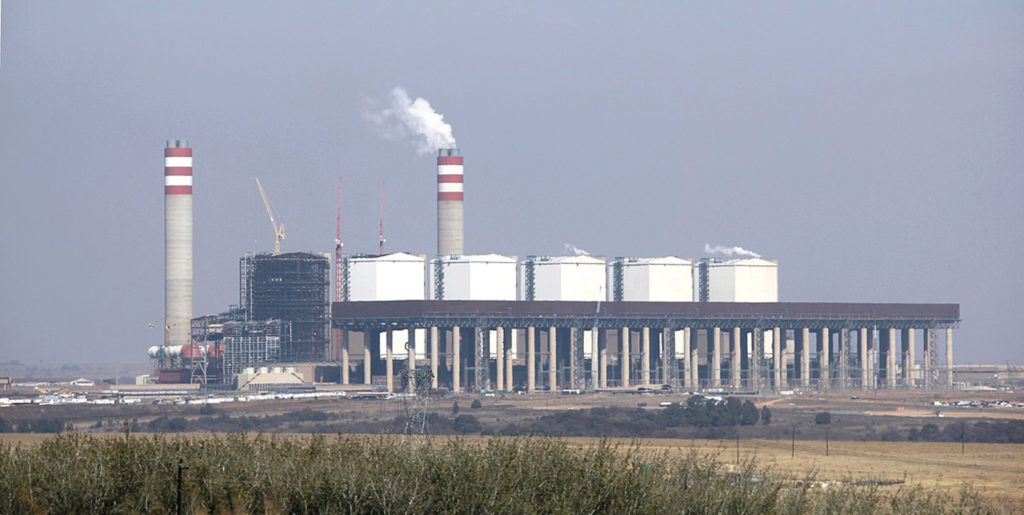INSIGHTS • ENERGY TRANSITION

THE SLOW MOVE TO CLEANER POWER
BY MIKE POTHIER | PROGRAMME MANAGER, SACBC PARLIAMENTARY LIAISON OFFICE
WHEN IT comes to climate change, South Africa has a really mixed record; this reflects a long-standing problem with our government’s inability to settle on clear policies and make sure that they are consistently implemented.
Some years ago, there was a big push in favour of sustainable energy sources. It was reported that South Africa was adding solar and wind power capacity faster than any other country. This made a lot of sense, since we are blessed with abundant sunshine, plenty of wind, and lots of relatively empty land on which to build solar and wind installations. We also have an extensive national electricity grid to which such installations can quite easily be linked.
Conflicting views on coal
However, things seem to have slowed down. Although new solar plants and wind farms are still being built, there doesn’t seem to be the sense of urgency that we need. The Minister of Minerals and Energy, Gwede Mantashe, keeps talking about the importance of coal, which he thinks should remain the bedrock of electricity generation for decades to come. He also favours nuclear power, despite the enormous cost of this option.
Mr Mantashe’s approach is very different to that of President Cyril Ramaphosa, who wrote as follows in one of his weekly newsletters in October 2021: “We will be decommissioning and repurposing coal-fired power stations, and investing in new low-carbon generation capacity, such as renewables. We will also pursue ‘green’ industrialisation, such as manufacturing—using green technology and a shift to the production of electric vehicles.”
Mr Ramaphosa also announced recently that licences would be given to private power producers to generate up to 100 megawatts of electricity. This amount is a very significant improvement on the previous ceiling of one megawatt—an indication that the government has finally woken up to the crisis of electricity generation, and that it realises that there is a role for the private sector. It is safe to say that the great majority of privately generated electricity will come from renewable sources, and little if any from coal.
The transition to cleaner power needs to be a just one, in which alternative jobs or sources of income are found for these workers
In another move away from coal, and despite Mr Mantashe’s hesitations, ESKOM, the national electricity supplier, is in the process of converting a coalfired power station at Komati in Mpumalanga into a centre for renewable energy technologies. Some of the land around the power station will be used for solar (photo-voltaic) panels, while the buildings and warehouses will be used to house battery storage and for the assembly of ‘micro-grids’ (small-scale, self-contained, electricity generating and distributing systems).
If this project is successful, it will most likely be repeated at many places in Mpumalanga and Limpopo provinces, where the existing fleet of coal power stations, most of which have reached the end of their design lives, will need to be shut down in the near future. But when power stations close, what happens to the thousands of people who depend on them—the people who run them, their families, the workers in the coal mining and transporting industries, and the many businesses that supply services to the people who live and work in the ‘coal towns’?
As the Environment Minister, Barbara Creecy has said, when a power station is decommissioned, “there should not be a situation where communities dependent on the power stations and workers who work in the power stations, are thrown on the street with nothing.” The transition to cleaner power needs to be a just one, in which alternative jobs or sources of income are found for these workers. This is going to be one of the great challenges of the coming decades, and it will require a lot of creative and innovative thinking—again, not something that our government has consistently demonstrated.
And all the time, as older power stations are closed, and work proceeds on solar and wind plants, there are two giant elephants in the room—the still unfinished Kusile and Medupi coal power stations that, between them, will generate one-sixth of our electricity. Given the billions of Rands that these massive facilities cost, there is no way they can be taken out of the system—they will probably be burning coal until at least the second half of this century.
